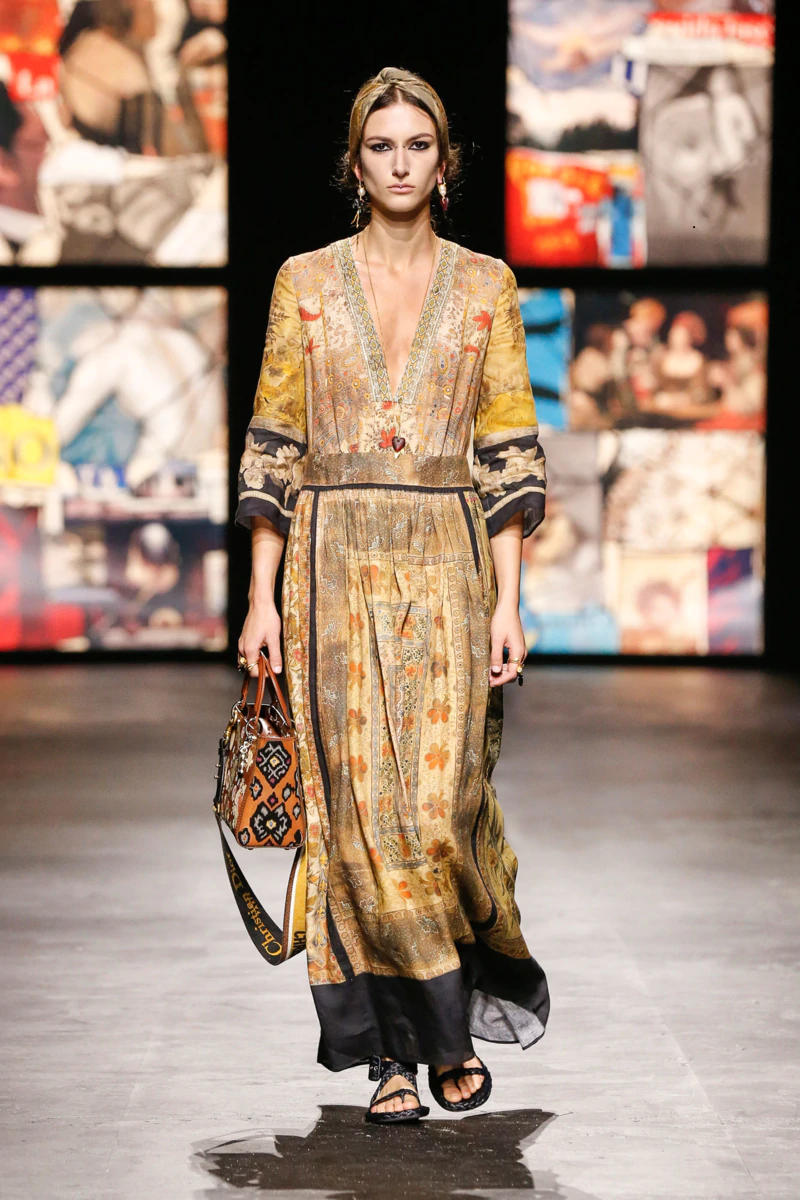Maria Grazia Chiuri's Spring 2021 Dior Show Is A Quasi-Religious Experience
/Maria Grazia Chiuri's Spring 2021 Dior Show Is A Quasi-Religious Experience
Fashion media expressed a variety of generally positive responses to Christian Dior Creative Director Maria Grazia Chiuri’s Spring/Summer 2021 presentation. The event was produced by Alexandre de Betak, with styling by Elin Svahn and garnered an estimated 95 million live views online.
The model cast was massive in a show that for me was very ritualistic. Some fashion writers focus primarily on the clothes, while other focus on the message. Clearly Chiuri’s objective is to fuse both the functional and the intellectual into one cohesive design story.
Dior’s visionary has long sought to unite “the desirable with the wearable long before lockdown set it”, wrote Vogue. And she admitted (see Chiuri’s video later in the post about the references, influences and lifestyle trends evident in the clothes.) that her mission has intensified.
“We had to approach this collection with an idea more of design. We are living in a different way and staying more at home within our intimacy. Our clothes have to reflect this new style of life.”
The Fight to Liberate Women’s Bodies Continues
Chiuri’s Dior assignment was to create a New Look that resonates with the times. “This is very far from the Dior look, because Dior was a couture house. The idea of construction was really stiff,” Chiuri acknowledged. “The most important issue for me was to realize the new Dior silhouette: the jacket with the shirt and the pants. I think that is what really represents the feeling of the moment. I cross my fingers.”
“For a long time, there was a moment in fashion when clothes had to have a dialogue with other people, to express your opinion to other people. At this moment in time, I think it’s more about a personal relationship with ourselves,” Chiuri reflected. “You want to take care of yourself. I feel that, so I think other people need that feeling too.”
If body liberation was the goal, and expressed in shirts that elongated into tunics, trousers that became fluid and billowing, dressing gowns, kimono-style jackets, and dusters — those clothes were a step back into the North African influences and silhouettes that permeate Mediterranean culture. Chiuri delves into women’s history in these arts-driven exploration, with stops in the 60s to dialogue with functionalist designer Nanni Strada, whose approach to comfortable clothes was rooted in the wave of feminism sweeping Italy over the decade. A reinterpretation of 1957 Dior silhouettes created for Japan were sprinkled throughout the collection.

